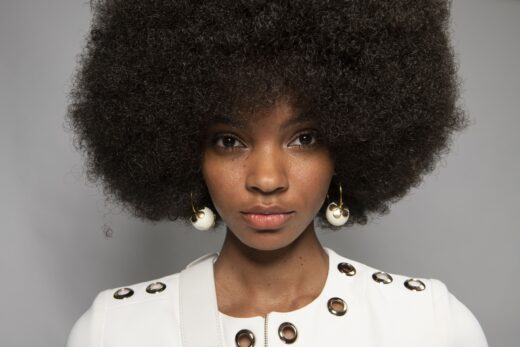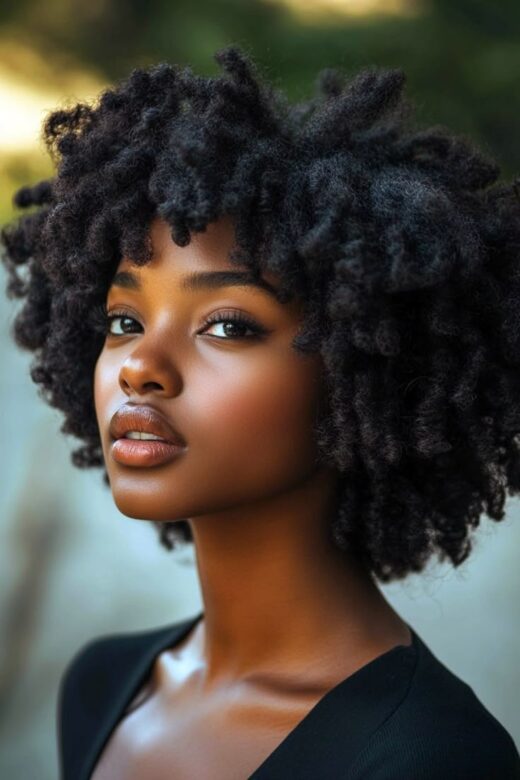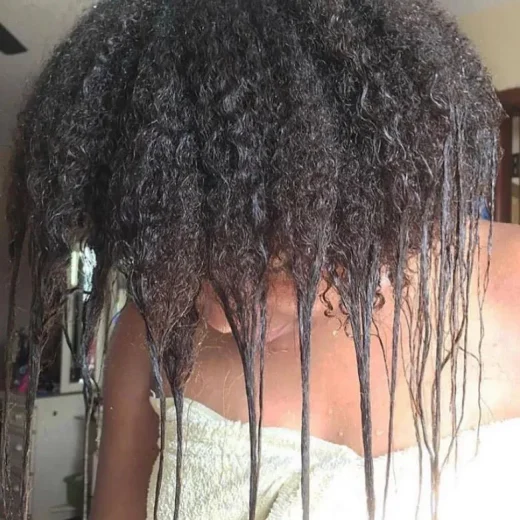Afro-textured hair is more than just a hairstyle—it’s a cultural and personal identity for many people. Understanding how to properly care for your hair is essential to keeping it healthy, strong, and beautiful.
Despite the increasing availability of haircare products specifically designed for Afro hair, professional services remain scarce. Black women, for example, spend three times more on haircare than their white counterparts, yet fewer than 1% of salons in the UK cater to Afro-textured hair.

While the industry slowly adapts to the demand, it’s crucial to know how to care for your hair at home. In this guide, you’ll discover:
- How to identify your Afro hair type
- Common causes of Afro hair loss
- Effective ways to nourish and repair damaged hair
What is Afro Hair?

Afro-textured hair refers to a broad spectrum of hair types primarily found in individuals of African descent. Often called “Black hair,” this type is typically curly or coiled, but the curl pattern, density, and thickness can vary widely. Studies show that approximately 94.9% of people with Afro hair have curly textures, while the remaining 5.1% have wavy hair.
Afro hair is classified into three main categories within the type 4 range:
- 4A: Looser curls with a well-defined S-pattern.
- 4B: Tightly coiled strands with a zig-zag pattern.
- 4C: The most tightly coiled and voluminous texture.
Unlike other hair types, Afro hair is highly versatile but requires specific care techniques. Many individuals opt for protective styles such as braids, twists, and locs to minimize breakage and reduce daily styling efforts.
Let’s explore each type in more detail.
Type 4A: Soft and Springy Coils
4A hair features well-defined, S-shaped curls that are about 1 cm wide. This curl pattern gives the hair volume and a springy texture, making it more resistant to shrinkage compared to other Type 4 textures.
Key Characteristics of 4A Hair:
- Naturally soft with visible curls
- Holds moisture better than other Afro hair types
- Still prone to dryness and requires hydration
Celebrities with 4A Hair:
- Nathalie Emmanuel
- Raven Symoné
- Alicia Keys
Type 4B: Zig-Zag Curls with More Shrinkage
4B hair forms a tight zig-zag curl pattern, giving it a denser, kinkier look. The curls are narrower, usually less than 0.5 cm in width, and can shrink up to 75% of their actual length when drying.
Key Characteristics of 4B Hair:
- Prone to dryness and frizz due to tightly coiled strands
- Requires extra moisture to prevent breakage
- Can tangle easily due to its dense structure
Celebrities with 4B Hair:
- Celeste
- Viola Davis
- Jennifer Hudson
Type 4C: The Most Tightly Coiled Texture
4C hair has the tightest curls, creating significant volume and a soft, fluffy texture. However, its delicate strands are highly susceptible to breakage and shrinkage.
Key Characteristics of 4C Hair:
- Shrinks significantly when wet
- Requires careful detangling to prevent damage
- Often benefits from deep conditioning and protective styling
Celebrities with 4C Hair:
- Solange Knowles
- Lupita Nyong’o
- Pam Grier
Understanding Natural Afro Hair
“Natural Afro hair” refers to hair that has not been altered with heat or chemical straighteners. While some people prefer to chemically process their hair for easier management, keeping it in its natural state often requires moisturizing and protective styling.
Relaxed or chemically treated hair does not always revert to its natural texture after washing. Many treatments are permanent until new hair growth replaces the processed strands.
What Damages Afro Hair?

Afro hair is naturally more fragile than other hair types. Even routine grooming practices like brushing or combing can cause damage if not done correctly.
Key Factors That Contribute to Hair Damage
- Hair Structure – The natural kinks in Afro hair create weak points that are prone to breakage.
- Chemical Processing – Hair relaxers and color treatments can weaken hair strands over time.
- Heat Damage – Excessive use of styling tools like straighteners and curling wands can lead to dryness and breakage.
- Tight Hairstyles – Protective styles, if worn too tightly or for prolonged periods, can cause traction alopecia (a type of hair loss).
Types of Afro Hair Damage
1. Heat Damage
Overuse of heat styling tools can weaken the hair structure and lead to trichorrhexis nodosa, a condition where hair shafts break at weak points. Heat damage is often irreversible, making it essential to use heat protection sprays.
2. Chemical Damage
Hair relaxers and dyes can cause:
- Cuticle damage (making hair rough and brittle)
- Thinning hair strands (leading to breakage)
- High porosity (hair absorbs moisture but doesn’t retain it)
3. Traction Alopecia
This hair loss condition results from wearing tight hairstyles like braids, weaves, and ponytails for extended periods. Studies show that relaxers double the risk of traction alopecia, while leaving cornrows in for a year increases the risk fivefold.
Common Causes of Hair Loss in Afro Hair
Afro hair is also susceptible to medical and genetic conditions that can trigger hair loss, including:
- Alopecia Areata – An autoimmune disorder causing bald patches.
- Telogen Effluvium – Stress-related temporary hair shedding.
- Thyroid Disorders – Can cause excessive hair loss.
- PCOS & Hormonal Changes – Common causes of female hair thinning.
- Frontal Fibrosing Alopecia – A condition that leads to receding hairlines, particularly in Black women.
- Central Centrifugal Cicatricial Alopecia (CCCA) – A common condition among Black women that can cause permanent hair loss.
How to Restore and Maintain Healthy Afro Hair
1. Hydration is Key
Use moisture-rich shampoos, conditioners, and leave-in treatments to lock in hydration.
2. Minimize Heat and Chemicals
Limit chemical treatments and always use heat protection sprays when styling.
3. Avoid Tight Hairstyles
Give your scalp a break from tension by alternating between protective styles and loose natural styles.
4. Use the Right Products
Look for products with ingredients like:
- Argan oil
- Coconut oil
- Shea butter
- Aloe vera
5. Consider Professional Treatments
For severe hair loss, consider:
- Minoxidil (topical hair regrowth treatment)
- Microneedling (stimulates follicle regeneration)
- Hair transplants (permanent restoration option)
Final Thoughts
Taking care of Afro hair requires patience, knowledge, and the right approach. By understanding your hair type, using the right products, and avoiding damaging practices, you can maintain healthy, thriving curls.
If you’re struggling with hair loss, don’t hesitate to seek professional advice. With the right treatments, you can restore both your hair and your confidence.
Erdem Hospital – The right choice for your health!